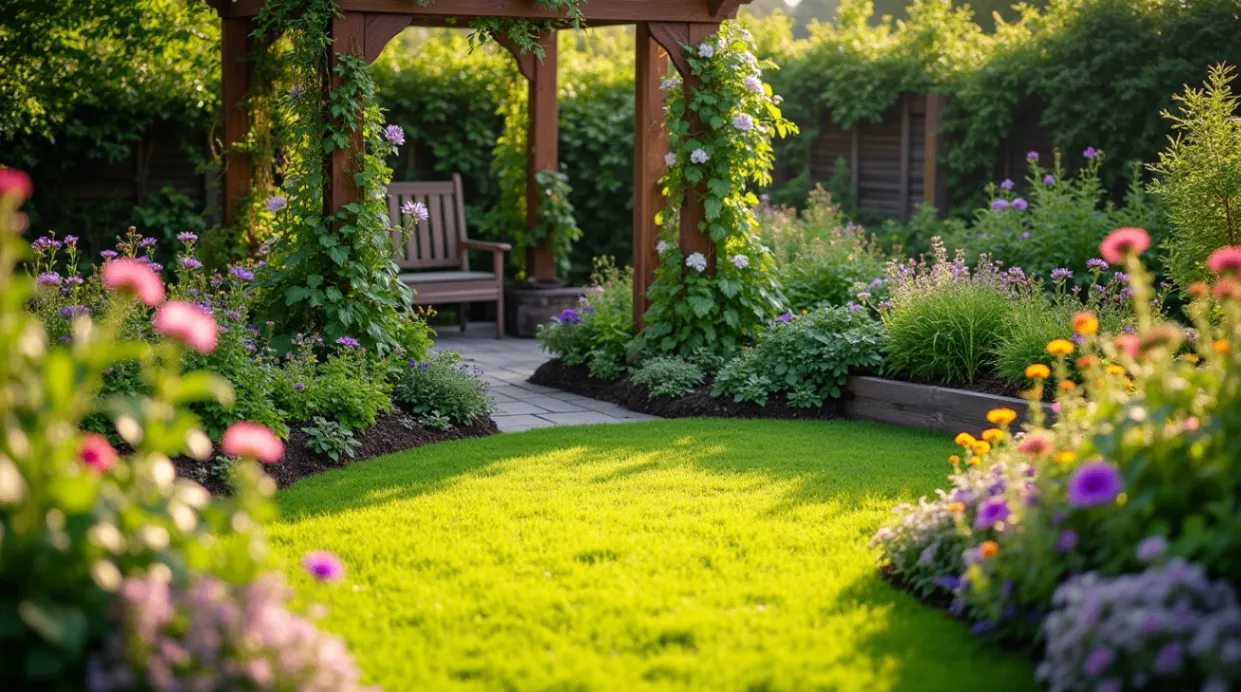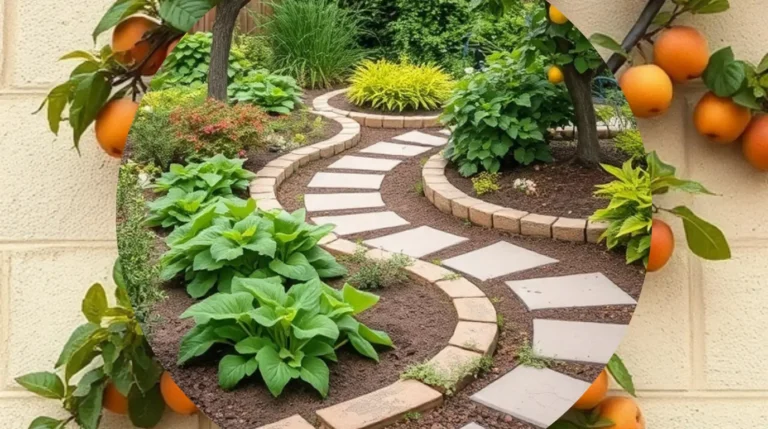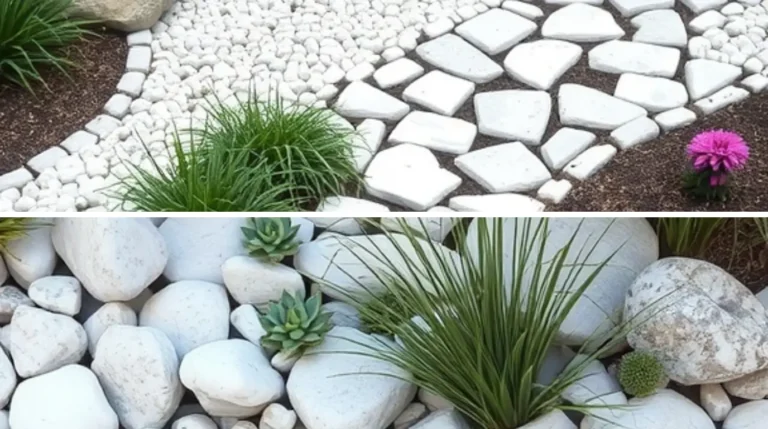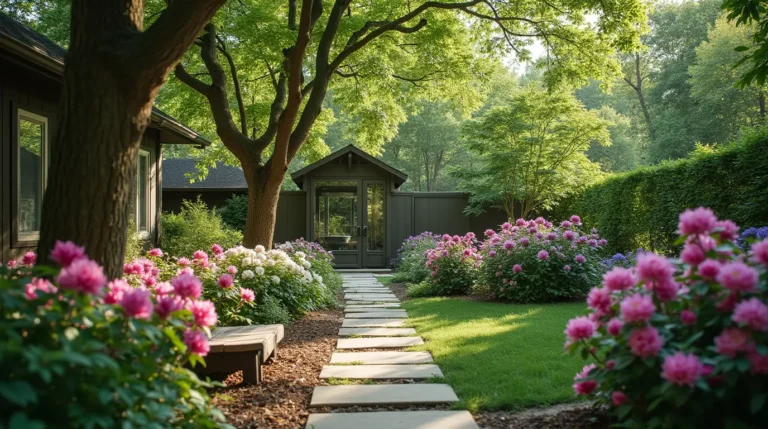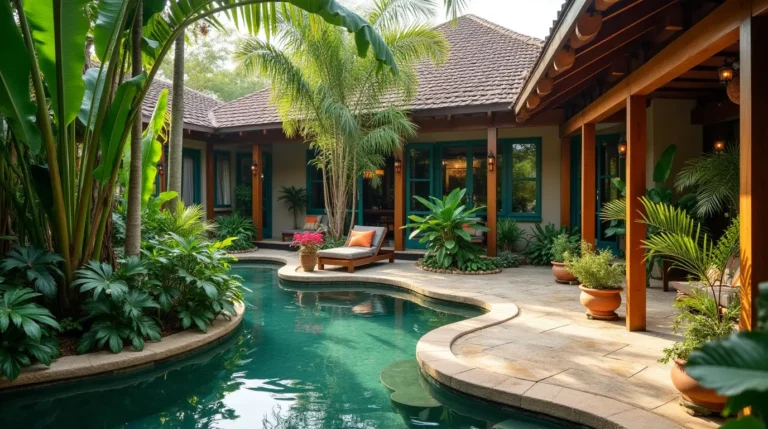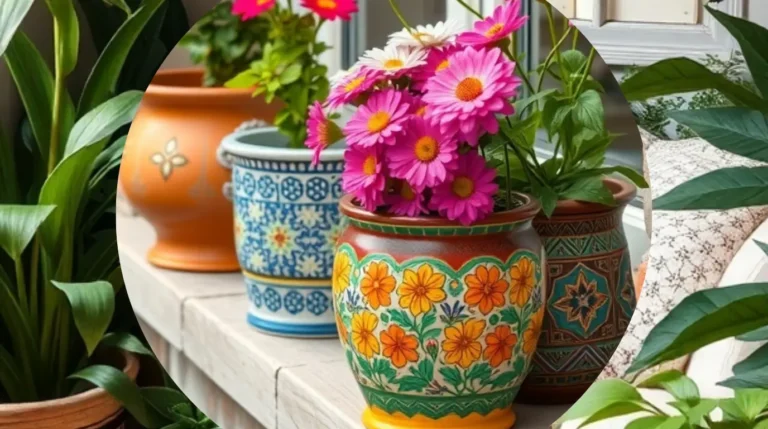Small Garden Design: Best Tips for a Cozy, Beautiful Yard
A well-designed small garden can be a peaceful retreat. It can be both beautiful and functional. Garden design is key to making an outdoor space look good and work well, even in small areas.
Effective small garden design can turn a tiny yard into a cozy oasis. Homeowners can make a space perfect for relaxing and having fun. Good garden design can also boost a property’s value, making it a smart investment.
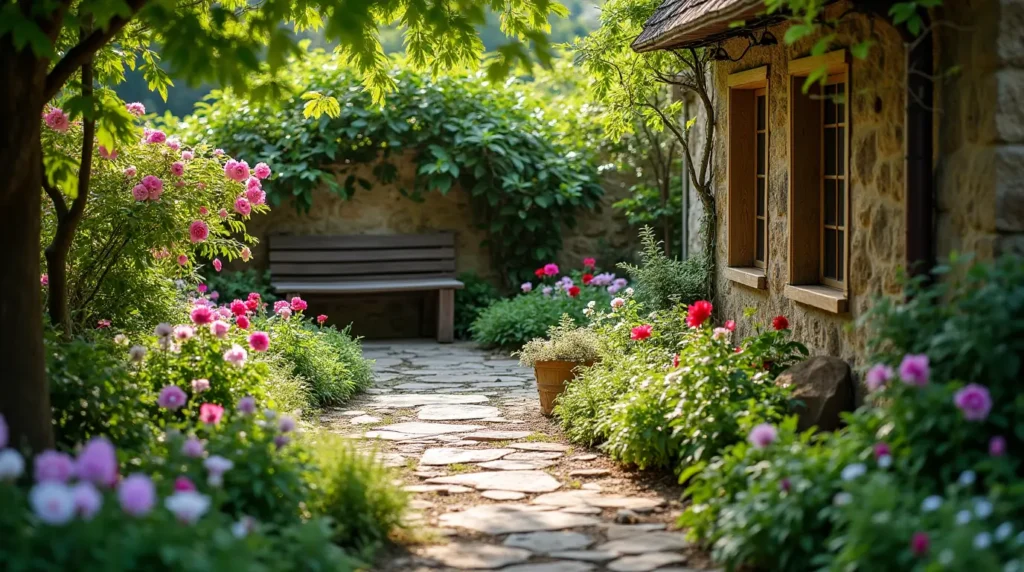
Whether you have a small backyard or a tiny patio, a well-designed garden matters. The right design can make your outdoor space perfect for living. From design to plant choice, every detail is important for a beautiful and useful outdoor area.
Introduction to Small Garden Design
In this article, we’ll share the best tips for a beautiful and functional small garden. We’ll cover garden design, plant choice, and upkeep. You’ll learn how to create a stunning outdoor space.
Key Takeaways
- A well-designed small garden can provide a peaceful retreat from daily life
- Effective garden design can transform a tiny yard into a cozy oasis
- Good small garden design can increase the value of a property
- Every element, from garden design to plant selection, plays a crucial role in creating a beautiful outdoor space
- A well-designed small garden can be perfect for relaxation and entertainment
- Small garden design requires careful planning and attention to detail
Understanding Your Small Garden Space
Understanding your small garden is key. You need to check the space, sun, and soil. This helps you design a garden that fits your space perfectly.
A garden in full sun needs different plants than one in shade. Succulents and herbs love full sun, while ferns and impatiens prefer shade. Knowing this helps pick the right plants for your garden.
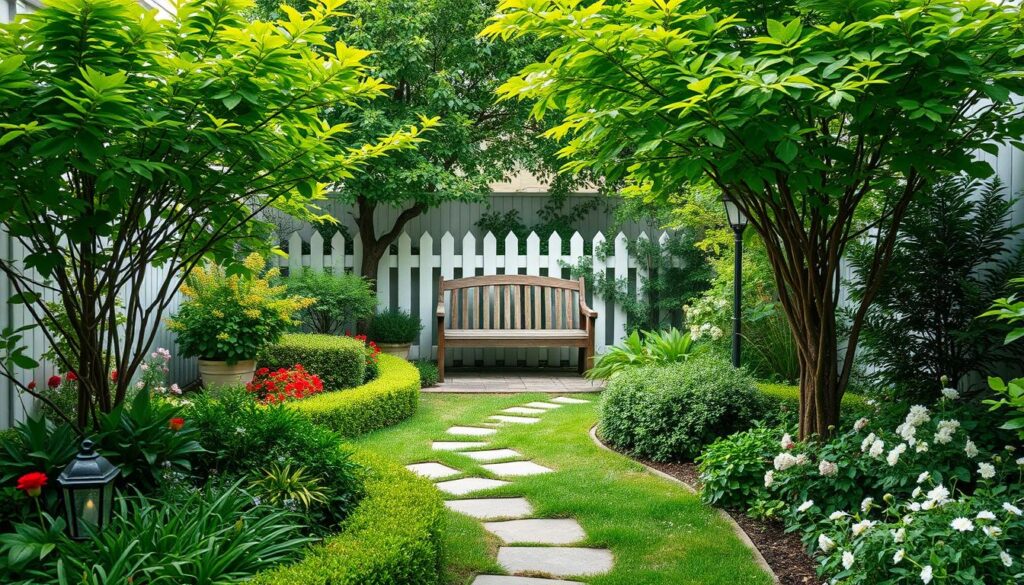
Assessing Available Space
Start by measuring your garden’s length and width. Think about its shape and any obstacles like trees. This helps plan where to put plants and paths.
Analyzing Sun Exposure
It’s important to know how the sun hits your garden. Note where it’s full sun, partial shade, or full shade. This helps pick the right plants for each spot.
Evaluating Soil Conditions
Soil health is crucial for a good garden. Test your soil to see its pH and nutrients. This helps choose the right plants and decide on fertilizers.
Essential Principles of Small Garden Design
Small garden design has key principles to keep in mind. These help create a beautiful and useful outdoor space, even with little room. Scale and proportion are crucial. This means picking plants and features that fit your garden’s size.
A big tree can overwhelm a small garden. But mixing large and small plants can balance and harmonize it.
Balance is also key in a small garden. Use different textures, colors, and shapes. For example, pair smooth-leaved plants with textured ones. Or mix plants that bloom at different times for a colorful display.
By using these design principles, you can make a small garden that’s inviting and meets your needs. It will also enhance your outdoor living space.
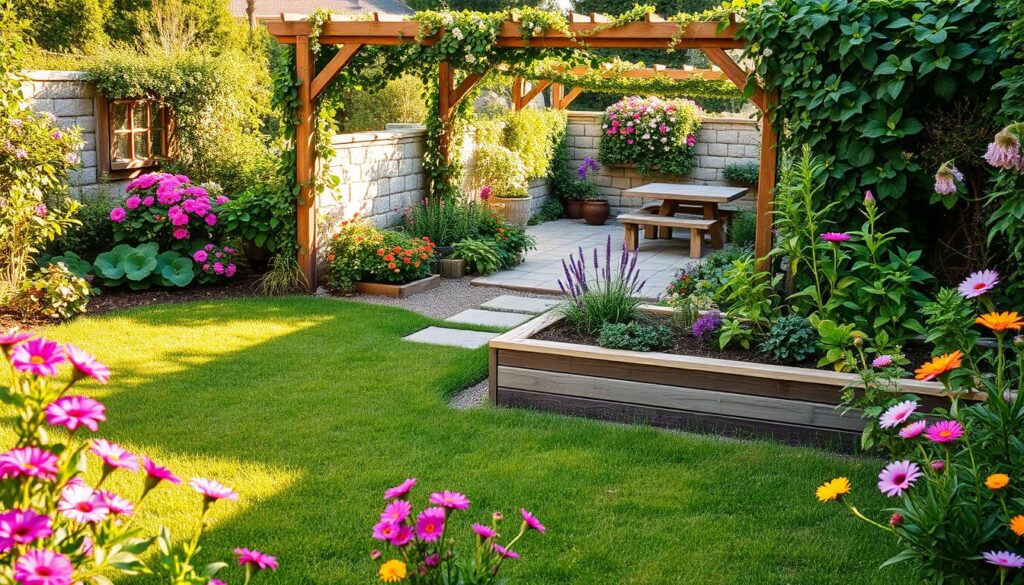
Other important principles include creating movement and using vertical elements. Use a winding path or trellises for plants to climb. These ideas help make your small garden beautiful and useful, offering a peaceful escape.
- Scale and proportion: Select plants and features that are in proportion to the size of your garden.
- Balance: Use a mix of different textures, colors, and shapes to create a sense of balance and harmony.
- Movement and flow: Create a sense of movement and flow by using a meandering path or incorporating vertical elements.
By following these garden design principles, you can create a small garden that’s both beautiful and functional. It will meet your needs and improve your outdoor living space. Whether it’s a small patio or a compact backyard, these principles help you maximize your space and find peace.
Creating a Master Plan for Your Yard
A well-designed small garden design needs a master plan. This plan should fit your yard’s unique features. It will make your outdoor space both functional and beautiful, matching your lifestyle.
Start by thinking about the look you want and how you’ll use your yard.
When making your master plan, focus on these important points:
- Sketching your layout to find the best space use
- Determining focal points for visual interest
- Planning how people will move around safely
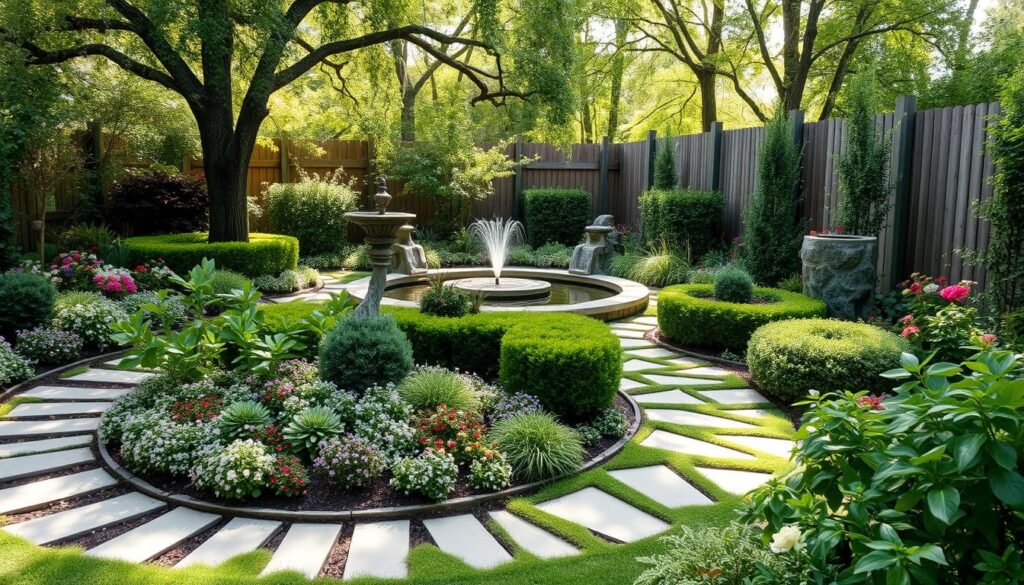
A good master plan makes your small garden design cohesive and useful. It improves your outdoor living. By planning well, your yard will be both lovely and practical, a great escape from daily life.
Creating a well-designed master plan is key to a garden you’ll love for years. Think about your needs, check your space, and make a plan that brings your dream to life.
Maximizing Vertical Space in Small Gardens
In small gardens, using vertical space is key to add depth and interest. You can do this with living walls, green screens, and climbing plants. These elements help pack more plants, textures, and colors into your garden, making it lush and welcoming.
There are many ways to make the most of vertical space. Here are a few:
- Living walls: These are walls covered in plants, attached to buildings or freestanding structures.
- Green screens: These are trellises or supports for plants to climb, offering privacy or shade.
- Climbing plants: These plants grow up walls, trellises, or supports, adding color and texture.
In small gardens, vertical space helps create layers. Plants at different heights and textures add depth. Use living walls, green screens, and climbing plants together. For example, a living wall can be the backdrop, with green screens and climbing plants in front for a layered look.
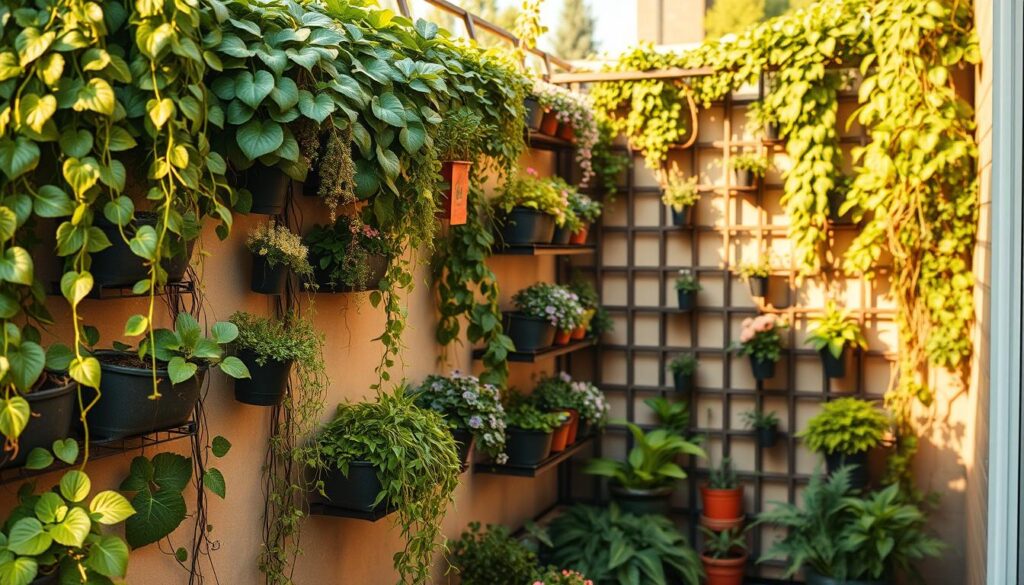
Maximizing vertical space in your small garden turns it into a beautiful, functional space. With creativity and planning, your small garden can become a vibrant oasis. It will bring joy and relaxation to your life.
| Vertical Space Option | Description |
|---|---|
| Living Walls | Walls covered with plants, attached to a building or freestanding structure |
| Green Screens | Trellises or supports for plants to climb, providing natural screen for privacy or shade |
| Climbing Plants | Plants trained to climb up walls, trellises, or other supports, adding color and texture |
Selecting the Right Plants for Limited Spaces
When designing a small garden, picking the right plants is key. The right plants can turn a small space into a beautiful, thriving garden. For tight spots, choose plants that are small, can handle drought, and need little care. This saves time and keeps your garden looking great.
Plants like succulents, herbs, and colorful flowers like petunias and geraniums are great for small gardens. They are easy to care for and add color. Think about sunlight, soil, and moisture when picking plants to make sure they’ll do well in your garden.

- Choose plants that are disease-resistant and pest-free
- Select plants with similar growing conditions to minimize maintenance
- Consider using container gardens to make the most of limited space
- Don’t forget to leave space for air circulation and growth
By choosing the right plants and following these tips, you can create a beautiful small garden. Remember, picking plants is a big part of garden design. Don’t be afraid to try new things and see what works best for you.
| Plant Type | Space Requirements | Maintenance Level |
|---|---|---|
| Succulents | Small | Low |
| Herbs | Medium | Medium |
| Flowering Plants | Large | High |
Color Theory in Small Garden Design
Color theory is key in small garden design. It helps make your garden look good and feel right. By knowing color theory, you can pick colors that match your garden’s look.
A good color scheme can make your small garden look bigger and more welcoming. Use the 60-30-10 rule: 60% of the garden should have a main color, 30% a secondary color, and 10% an accent color.
Creating Color Schemes
To pick a color scheme, start with a main color that shows your style and fits the area around your garden. Next, pick a secondary color for contrast and interest. Finally, add an accent color to highlight special features.
Seasonal Color Planning
Planning colors for each season is also important. Choose plants that bloom at different times. This way, your garden will always look fresh and interesting.
Using Color to Create Depth
Color can add depth to a small garden. Use cooler colors in the back and warmer colors up front. This trick makes your garden seem bigger and more interesting.
- Use cooler colors like blues and purples for distance
- Use warmer colors like oranges and yellows for closeness
- Try different color mixes to find the best for your garden
By using color theory in your small garden design, you can make a beautiful and welcoming space. It will show off your style and match the area around it.
| Color | Effect |
|---|---|
| Cool colors (blues, purples) | Create a sense of distance |
| Warm colors (oranges, yellows) | Create a sense of closeness |
| Neutral colors (greens, browns) | Provide balance and harmony |
Incorporating Multi-functional Features
In small garden design, using multi-functional features is key. It helps make your space both useful and pretty. Features like benches, planters, and trellises can do more than one thing. They can be for sitting, storing things, or just looking good.
Every part of your small garden should have a role. For instance, a bench can be a place to sit and also hold plants or things you need to store. A trellis can help plants grow up and also block views or separate areas. This way, you can keep your garden tidy and easy to move around in.
- Benches with built-in planters or storage
- Trellises with climbing plants and screens
- Planters that double as tables or stools
- Water features that also serve as bird baths or fountains
Adding these features to your small garden makes it both lovely and useful. You get the most out of the space you have.
| Feature | Function | Benefits |
|---|---|---|
| Benches with planters | Seating and storage | Space-saving, decorative |
| Trellises with screens | Support for climbing plants, privacy | Visual interest, functional |
| Planters with tables | Decoration and seating | Multi-functional, space-saving |
Smart Storage Solutions for Garden Tools
Storage solutions are key in small garden design. They help keep your garden tidy and organized. A good storage system makes it easy to find and use your garden tools.
In small gardens, using space wisely is crucial. You can do this by using hidden storage spots. Think about using vertical space or turning benches and planters into storage areas.
Hidden Storage Ideas
- Under-bench storage is great for hiding gardening tools and accessories.
- Install a trellis or arbor with storage for small items like seeds and gloves.
- Decorative planters or pots with built-in storage are perfect for small tools and supplies.
Dual-Purpose Furniture
Dual-purpose furniture is a smart choice for small gardens. Look for a storage bench or a potting table with built-in storage. These pieces keep your tools and equipment organized.
Smart storage solutions make gardening in small spaces better. Choose solutions that meet your needs and match your garden’s style.
Lighting Your Small Garden Space
Lighting is key in small garden design. It makes your outdoor area feel cozy and inviting. The right lights can also show off your garden’s highlights.
Here are some great lighting options for your small garden:
- Solar-powered lights: energy-efficient and easy to install
- String lights: add a touch of warmth and coziness to your garden
- Pathway lights: guide visitors through your garden and highlight its features
Choose lights that match your garden’s design and style. With the right lighting, your garden will be beautiful day and night.
Adding lighting to your small garden makes it both beautiful and functional. It’s a space you’ll want to spend time in.
| Lighting Option | Benefits |
|---|---|
| Solar-powered lights | Energy-efficient, easy to install |
| String lights | Add warmth and coziness, easy to hang |
| Pathway lights | Guide visitors, highlight garden features |
Water Features for Compact Gardens
Adding water features to small gardens can really boost their look. They bring a calm and peaceful vibe, making your garden a great place to relax. It’s key to pick water features that save space and are simple to care for.
Features like fountains and ponds can make your garden feel deeper and more interesting. They also help block out background noise, creating a quiet spot. Make sure the water feature fits your garden’s size and style. You want it to look good without taking over the space.
Space-Saving Fountain Options
There are many fountains that won’t take up much room in small gardens. Wall-mounted, tabletop, and self-contained fountains are great choices. They’re easy to set up and don’t use much space. Think about your garden’s look and how much upkeep you’re okay with when picking a fountain.
Maintenance Requirements
Keeping your water feature clean and working right is key. You’ll need to clean the pump and filter, check the water level, and watch the feature’s condition. Regular care helps your feature last longer and keeps your garden looking great.
Water features can turn your small garden into a peaceful oasis. With the right choice and care, they’re a fantastic addition to any small garden.
Creating Privacy in Small Gardens
Privacy is key in small garden design. A private outdoor space is perfect for relaxation and fun. You can use plants, screens, and design elements to make it secluded and intimate.
Strategic planting can help with privacy. Tall plants or trees can hide views from neighbors. Bamboo, arborvitae, and leyland cypress are good choices. Screens or trellises can also add privacy.
- Plant tall plants or trees to block the view
- Use screens or trellises to add an extra layer of privacy
- Incorporate outdoor structures, such as pergolas or gazebos, to create a sense of seclusion
It’s also important to balance privacy with light and air. Use transparent screens or outdoor lighting to keep your garden bright. This way, you can have a private and welcoming space.
With these design elements, you can make a private and cozy outdoor area. It’s great for relaxing and having fun. Whether you want to hide views or just feel secluded, there are many ways to do it in small garden design.
| Design Element | Privacy Benefit |
|---|---|
| Tall plants or trees | Blocks the view from neighboring properties |
| Screens or trellises | Adds an extra layer of privacy |
| Outdoor structures | Creates a sense of seclusion |
Year-Round Interest Strategies
Creating a small garden that looks good all year is a challenge. But with the right plan, you can have a beautiful outdoor space all year. Winter garden planning is key. It means picking plants and features that do well in cold weather.
To keep your garden interesting all year, plan for seasonal changes. Mix evergreen and deciduous plants. Add outdoor lighting and water features for year-round enjoyment. This way, your garden will always look good, no matter the season.
Winter Garden Planning
For a winter garden, choose plants with interesting textures and colors. Ornamental grasses and winter berries are great. They add beauty to your garden in winter and set a nice backdrop for other features.
Seasonal Transitions
For smooth season changes, pick plants that bloom at different times. Start with spring bulbs, then summer perennials, and finish with autumn foliage. This makes your garden dynamic and interesting all year.
- Evergreen shrubs like boxwood and holly
- Deciduous trees like maple and oak
- Perennials like coneflower and black-eyed Susan
By using these plants and features, you can make a beautiful garden. It will be functional and interesting all year.
| Season | Plant Suggestions | Features |
|---|---|---|
| Winter | Ornamental grasses, winter berries | Outdoor lighting, water features |
| Spring | Spring-blooming bulbs, perennials | Garden decor, bird feeders |
| Summer | Summer-flowering perennials, annuals | Outdoor seating, shade structures |
| Autumn | Autumn-colored foliage, perennials | Outdoor lighting, fire pits |
Budget-Friendly Design Solutions
Creating a beautiful small garden doesn’t have to cost a lot. With a bit of creativity, you can make a stunning outdoor space without spending much. One smart way to save is by doing DIY projects. You can make your own planters, trellises, and decorations using cheap materials like reclaimed wood or bamboo.
Choosing affordable materials is another smart move. Pick plants that are easy on your wallet, like succulents. Use solar lights or handmade ornaments for decor. You can even use old materials like bricks or stones to make interesting features like pathways or walls.
DIY Project Ideas
- Build a vertical garden using a wooden pallet or a trellis
- Create a mosaic garden table using broken tiles or glass
- Make a self-watering planter using a plastic bottle or a wooden barrel
Cost-Effective Materials
Here are some cheap materials for your garden:
- Reclaimed wood or bamboo for planters or decorations
- Affordable plants like succulents or groundcover
- Budget-friendly decor like solar lights or handmade ornaments
By using these budget-friendly ideas, you can create a beautiful garden without spending a lot. With a little creativity, you can make a stunning garden that fits your style and budget.
Conclusion: Bringing Your Small Garden Vision to Life
Small garden design is a fun and rewarding challenge. It’s about understanding your space, using key design principles, and picking the right plants and features. This way, even the smallest outdoor area can become a beautiful oasis.
To succeed in small garden design, use every inch of space wisely. Add multi-functional elements and creative storage solutions. With good planning and a personal touch, you can make a peaceful retreat that fits your lifestyle.
Use the ideas from this article to start your small garden makeover. With some effort and imagination, you’ll have a cozy, lively outdoor space that’s all yours.
FAQ
What are the essential principles of small garden design?
Small garden design focuses on scale, proportion, and balance. It’s important to match the size of plants and structures to the space. Balance makes the garden look good and feel right.
How can I maximize vertical space in a small garden?
Use living walls, green screens, and climbing plants to make the most of vertical space. Trellises and arbors add depth and interest.
What types of plants are best suited for small gardens?
Choose compact, drought-tolerant, and easy-to-care-for plants. Dwarf versions of popular plants are great for small spaces. Make sure they need the right sun and soil.
How can I incorporate multi-functional features into my small garden design?
Add benches, planters, and trellises to make the most of your space. These features are useful and add beauty, making your garden more functional.
What are some smart storage solutions for garden tools in a small space?
Use hidden storage like built-in cabinets or drawers. Dual-purpose furniture can hide tools. Wall-mounted racks or pegboards are also good for saving space.
How can I create privacy in my small garden?
Use plants, screens, and design elements to create privacy. Tall hedges, lattice panels, or vertical gardens work well. They keep your space private while letting in light and air.
How can I incorporate year-round interest in my small garden?
Plan for all seasons by choosing plants that look good in winter. Use design elements that change with the seasons. This keeps your garden interesting all year.
What are some budget-friendly design solutions for a small garden?
Save money by doing DIY projects and using old materials. Choose affordable plants and decor. This way, you can have a beautiful garden without spending a lot.

